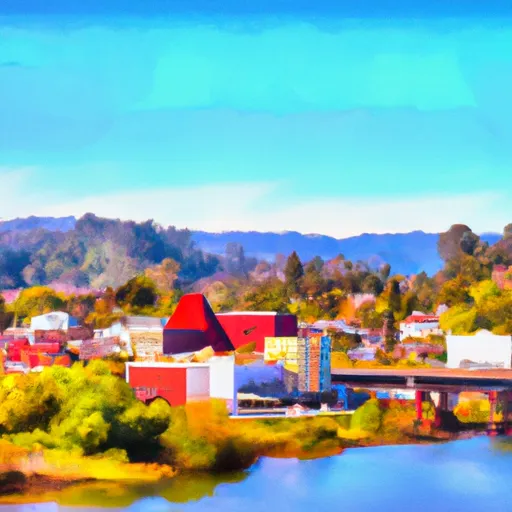-
 Snoflo Premium
Snoflo Premium
Get unlimited access to all our content
With no Ad interruptions! - Start Your Free Trial Login with existing account
Russian-River
Eden Index
Climate
7.8
•
Recreation
3.1
•
Community
7.5
•
Safeguard
6.1/10

Russian River is a captivating region located in Sonoma County, California. Known for its idyllic climate and stunning landscapes, it offers a variety of outdoor recreation opportunities. The climate in Russian River is Mediterranean, characterized by mild, wet winters and warm, dry summers. This makes it an excellent destination for year-round outdoor activities.
The Russian River itself is a prominent feature of the region, flowing from the Mendocino County line through picturesque valleys and forests before emptying into the Pacific Ocean. The river's hydrology constituents include pristine waters and diverse ecosystems that support an array of wildlife, including salmon and steelhead trout.
Outdoor enthusiasts can indulge in numerous activities in Russian River. The river provides excellent opportunities for kayaking, canoeing, swimming, and fishing. Hiking and biking trails wind through the surrounding hills and forests, offering breathtaking views and a chance to explore the region's natural beauty. Additionally, Russian River is home to several campgrounds and parks, where visitors can immerse themselves in nature and enjoy camping, picnicking, and birdwatching.
Overall, Russian River offers a delightful climate, pristine waters, and a wealth of outdoor recreation opportunities, making it an ideal destination for nature lovers and adventure seekers alike.
What is the Eden Index?
The Snoflo Eden Index serves as a comprehensive rating system for regions, evaluating their desirability through a holistic assessment of climate health, outdoor recreation opportunities, and natural disaster risk, acknowledging the profound impact of these factors on livability and well-being.
Climate Health Indicator (CHI): 7.8
Russian-River receives approximately
515mm of rain per year,
with humidity levels near 87%
and air temperatures averaging around
15°C.
Russian-River has a plant hardyness factor of
10, meaning
plants and agriculture in this region tend to thrive here all year round.
By considering the ideal temperature range, reliable water supplies, clean air, and stable seasonal rain or snowpacks, the Climate Health Indicator (CHI) underscores the significance of a healthy climate as the foundation for quality living.
A healthy climate is paramount for ensuring a high quality of life and livability in a region, fostering both physical well-being and environmental harmony. This can be characterized by ideal temperatures, reliable access to water supplies, clean air, and consistent seasonal rain or snowpacks.
Weather Forecast
Streamflow Conditions
San Francisco Bay
Area Rivers
San Francisco Bay
Snowpack Depths
San Francisco Bay
Reservoir Storage Capacity
San Francisco Bay
Groundwater Levels
Recreational Opportunity Index (ROI): 3.1
The Recreational Opportunity Index (ROI) recognizes the value of outdoor recreational options, such as parks, hiking trails, camping sites, and fishing spots, while acknowledging that climate plays a pivotal role in ensuring the comfort and consistency of these experiences.
Access to outdoor recreational opportunities, encompassing activities such as parks, hiking, camping, and fishing, is crucial for overall well-being, and the climate plays a pivotal role in enabling and enhancing these experiences, ensuring that individuals can engage in nature-based activities comfortably and consistently.
Camping Areas
| Campground | Campsites | Reservations | Toilets | Showers | Elevation |
|---|---|---|---|---|---|
| Anthony Chabot Regional Park | None | 858 ft | |||
| Half Moon Bay State Beach | None | 41 ft | |||
| Big Basin Redwoods State Park | 102 | 1,005 ft | |||
| Butano State Park | 39 | 181 ft | |||
| San Mateo Memorial County Park | 156 | 193 ft | |||
| Portola Redwoods State Park | 53 | 504 ft |
Catastrophe Safeguard Index (CSI):
The Catastrophe Safeguard Index (CSI) recognizes that natural disaster risk, encompassing floods, fires, hurricanes, and tornadoes, can drastically affect safety and the overall appeal of an area.
The level of natural disaster risk in a region significantly affects safety and the overall livability, with climate change amplifying these risks by potentially increasing the frequency and intensity of events like floods, fires, hurricanes, and tornadoes, thereby posing substantial challenges to community resilience and well-being.
Community Resilience Indicator (CRI): 7.5
The Community Resilience Indicator (CRI) recognizes that education, healthcare, and socioeconomics are crucial to the well-being of a region. The CRI acknowledges the profound impact of these elements on residents' overall quality of life. By evaluating educational resources, healthcare accessibility, and economic inclusivity, the index captures the essential aspects that contribute to a thriving community, fostering resident satisfaction, equity, and social cohesion.

